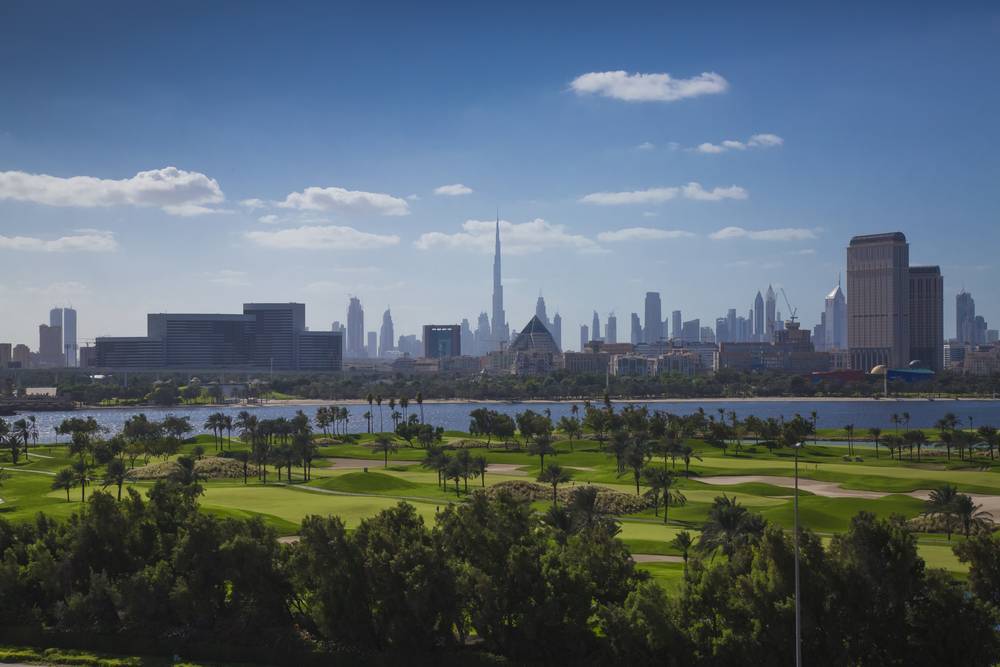How water can help transform Dubai into a resilient city
Monday 24th July 2017

Safeguarding the future of Dubai is not just a matter of building soaring structures, it’s about building strong and resilient communities. As the global climate changes, rising temperatures and increased risk of drought pose a serious threat to Dubai’s growth and liveability. These challenges, combined with the city’s ever-increasing population, mean innovative climate change solutions need to be implemented in order to ensure Dubai’s resilience as a city. Resilience — the ability to accommodate these changes successfully and without catastrophic failure — is critical in our current environmental landscape.
Already recognising the importance of resilience as key to Dubai’s future, the country’s leaders have implemented a number of strategies to help achieve this, such as the Dubai Plan 2021, the Dubai Happiness Agenda and the UAE Centennial 2071 project. All of these initiatives focus on developing resilient cities and strong communities in the UAE so the country and its inhabitants can continue to prosper for generations to come.
At the beginning of the year, the city also hosted the C40 Dubai Adaptation Conference to ensure megacities take action and embed climate adaptation into all decision-making and infrastructure projects. These smart infrastructure choices can help our cities to accommodate the changes thrust upon us by climate change and thus ensure our future resilience.
These choices are simple yet effective and work successfully in Dubai’s challenging environment. Many of the city’s developers are already implementing solutions, such as SUDS through techniques such as stormwater management systems, green roofs, podium decks, realising not only the benefits they offer to our environment but also the value they can add to their developments.
So what are these solutions? And how do they work?
SUDS - Sustainable Urban Drainage Solutions
Sustainable urban drainage systems use a sequence of techniques that together form a water management train. This eco-friendly alternative to traditional drainage methods, where surface water is drained quickly and directly into underground networks, prevents wastage by mimicking natural drainage processes.
The major benefit of SUDS is their water management capabilities, specifically stormwater managment. The shift in climatic conditions in the region and the frequency of increased intervals of rainfall mean that engineered solutions such as geocellular systems under our roads and pavements are now required to manage stormwater run-off in built up areas.
Geocellular systems such as Polystorm work by releasing the precipitation slowly into the ground rather than letting it flow into drains and sewers that are unable to cope during the peak event. Not only is this a great benefit to our existing infrastructure but it also prevents wastage.
With recent stormwater events effecting places like Jumeirah, the Dubai Municipality have started implementing solutions like Polystorm in these locations to prevent sewers overflowing and the subsequent damage to homes in the area.
SUDS Techniques
Podium Decks and Green Roofs
How many of the city’s many towering apartment or office buildings are home to residents and tenants who over look a lower buildings concrete roof? Wouldn’t it be much more pleasant to overlook a luscious green roof?
Not only would it be more pleasant aesthetically but it would also improve public health and the city environment. Already big business in the Netherlands, green roofs can be equally as successful in arid climates like Dubai’s. One of the key benefits of such an application being the reduction of the urban heat island effect, as plants reflect incoming sunlight back into the atmosphere and provide active evaporative cooling, green roofs will play a key part in our urban resilience to the increasing temperatures associated with climate change. Green roof surfaces can be up to a whopping 30°oc cooler!
Also referred to a blue-green solution or nature-based solution, green roofs work by slowing the rate of rainfall to the drainage and can store and attenuate water. By using a shallow geocellular water conservation system, like Permavoid, underneath the green roof landscape means that any stormwater can be managed at the source and used to irrigate the vegetation above it through capillary action.
This self-sustaining application can utilise water from a number of sources that would otherwise go to waste, such as air-conditioning condensate, wash down and stormwater.
Do you want to know more about the challenges and opportunities associated with resilience building?
The team at Polypipe are expert at managing water in the built environment. With years of experience both in the Middle East and globally, we can help you design the perfect solution for your project.
Contact us today to discuss the transformative solutions for your project:
Tel: +971 (0) 4 518 3000
Email: middleeast@polypipe.com
